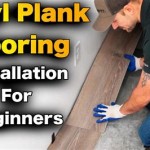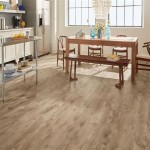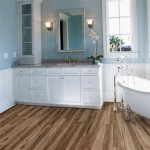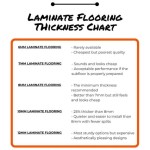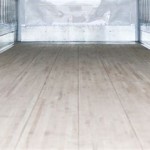Cost Considerations for Installing 1000 Sq Feet of Hardwood Flooring
Hardwood flooring remains a desirable choice for homeowners seeking durability, aesthetic appeal, and increased property value. However, understanding the costs associated with installing 1000 square feet of hardwood is crucial for effective budgeting and project planning. This article provides a comprehensive overview of the factors influencing the overall expenditure for such a project, encompassing material expenses, labor costs, and ancillary charges.
The total cost of installing 1000 square feet of hardwood flooring can vary significantly based on several factors. These include the type of hardwood selected, the complexity of the installation process, the geographical location of the project, and the prevailing labor rates. A thorough understanding of these variables is essential for obtaining an accurate estimate and making informed decisions.
Hardwood Material Costs
The selection of hardwood material constitutes a significant portion of the overall project cost. Different wood species possess varying characteristics and price points. Common hardwood options include oak, maple, hickory, cherry, and walnut. Oak is generally considered a more affordable option compared to walnut, which is often priced at a premium due to its rarity and aesthetic qualities. The price per square foot for hardwood can range from $3 to $15 or even higher, depending on the species, grade, and finish.
The grade of hardwood also influences the cost. Higher grades, such as select and better, exhibit fewer knots and imperfections, resulting in a cleaner, more uniform appearance. These grades typically command a higher price than lower grades, such as common or rustic grades, which may feature more character marks and color variations. Engineered hardwood, which consists of a hardwood veneer bonded to a plywood or fiberboard core, is often a less expensive alternative to solid hardwood. It provides similar aesthetic benefits while potentially offering greater dimensional stability.
Furthermore, the finish of the hardwood impacts the price. Pre-finished hardwood flooring, which is finished at the factory, tends to be more expensive than unfinished hardwood, which requires on-site sanding and finishing. Pre-finished options offer convenience and can reduce the overall project timeline, but they may limit customization options. The cost of the finish itself, whether it’s polyurethane, oil-based, or water-based, also contributes to the overall material expense.
When calculating the material costs, it's important to account for waste. Industry best practices suggest adding 5-10% to the total square footage to accommodate cuts, mismeasurements, and defective boards. This ensures that sufficient material is available to complete the project without delays or shortages.
Labor Costs Associated with Installation
Labor costs represent another substantial component of the total expense for installing 1000 square feet of hardwood flooring. The prevailing labor rates vary depending on the geographical location, the complexity of the installation, and the experience level of the installers. Generally, labor costs can range from $3 to $8 per square foot or higher, depending on the project specifics.
The complexity of the installation significantly impacts labor costs. Installing hardwood in a simple, rectangular room is typically less expensive than installing it in a space with intricate angles, curves, or transitions. Subfloor preparation is another factor that can influence labor costs. If the existing subfloor is uneven, damaged, or requires significant repairs, additional labor may be necessary to ensure a level and stable surface for the hardwood flooring.
The method of installation also affects labor costs. Nail-down, glue-down, and floating installations each require different levels of skill and time. Nail-down installations, which involve securing the hardwood planks directly to the subfloor, are often the most straightforward and may result in lower labor costs. Glue-down installations, which involve adhering the hardwood planks to the subfloor with adhesive, require more precision and can be more labor-intensive. Floating installations, which involve interlocking the hardwood planks together without securing them to the subfloor, are typically the easiest and may result in the lowest labor costs.
It is crucial to obtain multiple quotes from reputable flooring contractors to ensure competitive pricing and to assess their experience and qualifications. Checking references and reviewing online reviews can provide valuable insights into the quality of their workmanship and their customer service.
Ancillary Costs and Considerations
In addition to material and labor costs, several ancillary expenses can contribute to the overall cost of installing 1000 square feet of hardwood flooring. These include the cost of underlayment, molding and trim, and the removal and disposal of existing flooring.
Underlayment is a layer of material installed between the subfloor and the hardwood flooring. It provides cushioning, reduces noise transmission, and helps to protect the hardwood from moisture. The cost of underlayment can range from $0.50 to $2 per square foot, depending on the type and thickness of the material. Different types of underlayment are available, including foam, cork, and rubber, each offering varying levels of performance.
Molding and trim are used to conceal the gaps between the hardwood flooring and the walls, doorways, and other surfaces. They provide a finished, professional look and protect the edges of the hardwood from damage. The cost of molding and trim can vary depending on the material, style, and size. Common options include baseboards, shoe molding, quarter round, and transition strips.
The removal and disposal of existing flooring can also add to the overall project cost. Depending on the type of existing flooring and the complexity of the removal process, this can range from $1 to $3 per square foot. It's important to factor in the cost of disposal fees at local landfills or recycling centers.
Furthermore, consider the potential need for furniture moving and temporary relocation during the installation process. Moving furniture can be time-consuming and labor-intensive, and it may be necessary to hire professional movers. If the project is extensive or disruptive, temporary relocation may be necessary to minimize inconvenience.
Unexpected costs can also arise during the installation process. Damage to the subfloor that requires repair, asbestos abatement, or the need for additional materials due to unforeseen circumstances can all contribute to cost overruns. It's prudent to set aside a contingency fund of 5-10% of the total project budget to cover these potential expenses.
Finally, consider the long-term maintenance costs associated with hardwood flooring. Regular cleaning, refinishing, and repairs will be necessary to maintain the appearance and longevity of the flooring. Understanding these costs can help homeowners budget for the ongoing upkeep of their hardwood floors.
Understanding these factors allows for a more informed and realistic budgeting process, minimizing the risk of unexpected expenses and ensuring a positive and successful hardwood flooring installation project.

How Much Does It Cost To Install 1000 Square Feet Of Hardwood Floor

Hardwood Flooring Cost 2024 Per Square Foot Mk

How Much Does Hardwood Flooring Cost 2025 Guide

How Much Does Hardwood Flooring Cost 2025 Guide

Cost Of Installing Hardwood Floors Top 2024 Guide

How Much Does Hardwood Flooring Cost 2025 Guide

How Much Does It Cost To Install 1 000 Square Feet Of Laminate Flooring Estimate Florida Consulting

Mahogany Promotion Take Another 10 Off When You Buy More Than 1 000sq Ft Whiskey 5 E3x 3g9 Mqo Uc3

1000 Sq Ft Laminate Flooring Hardwood Services Commercial Building Mumbai At 120 Square Feet In

How Much Does It Cost To Install 1 000 Square Feet Of Engineered Hardwood Floors Major Flooring
Related Posts


